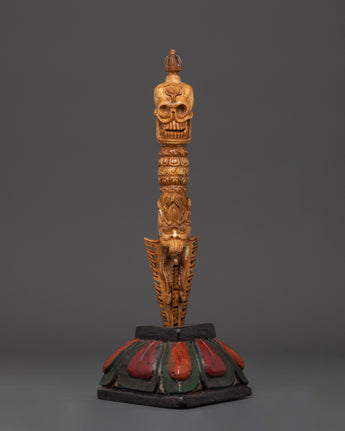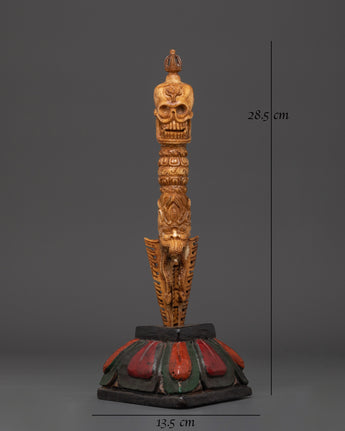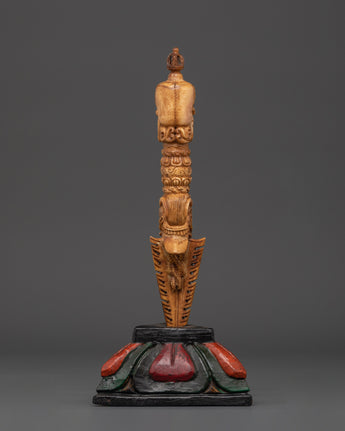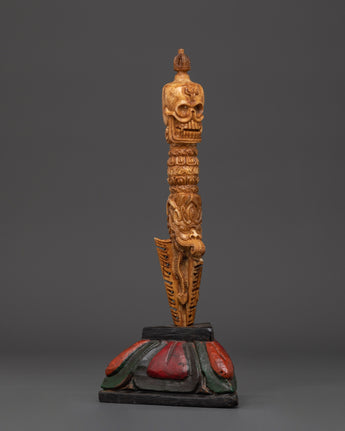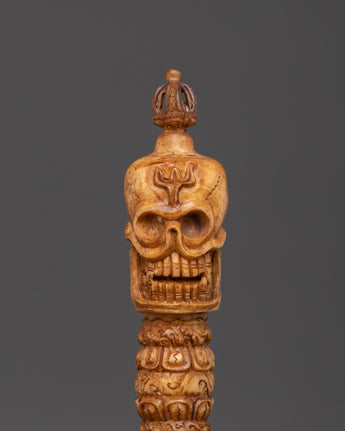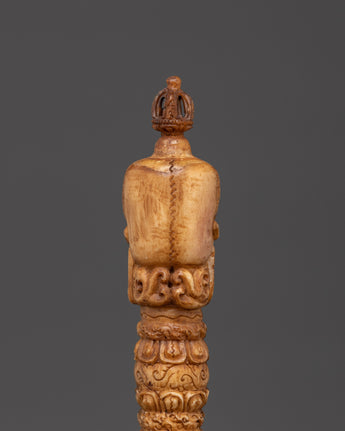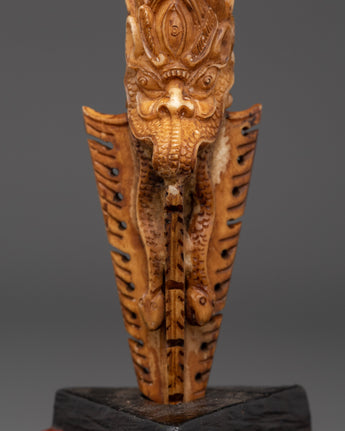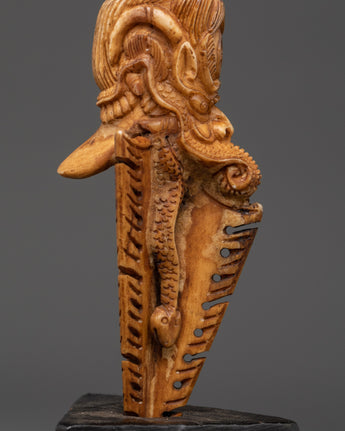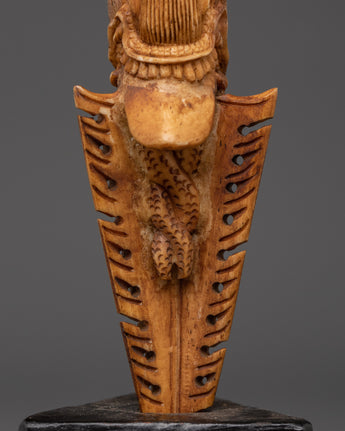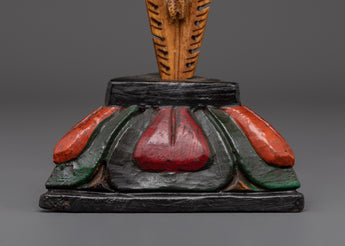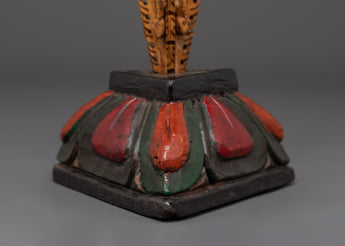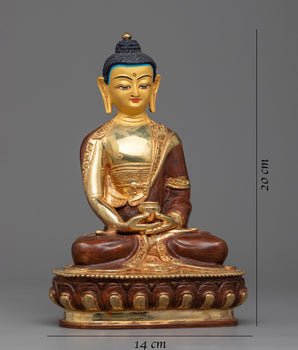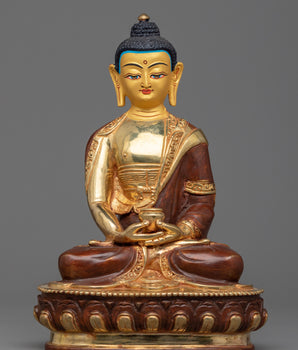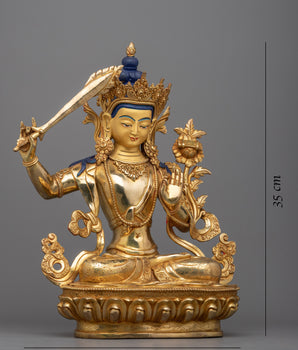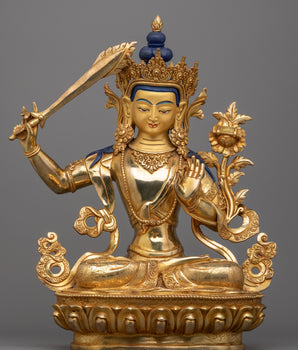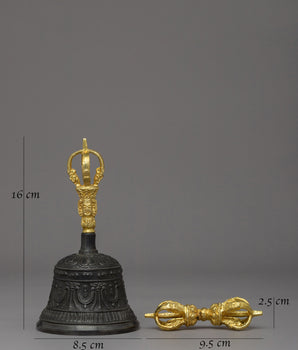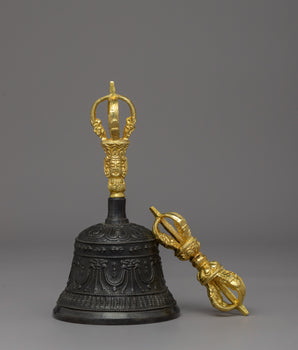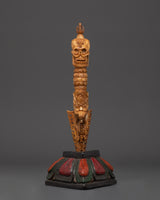
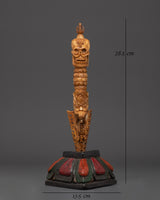
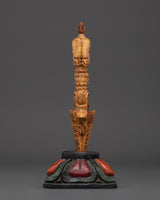
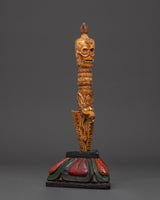
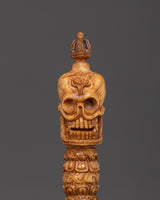
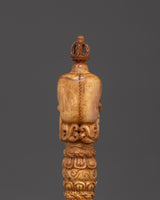
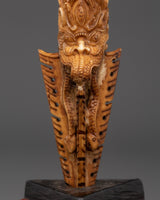
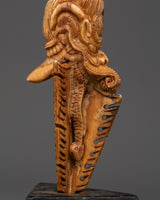
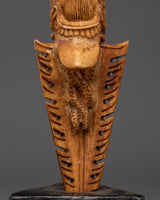
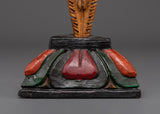
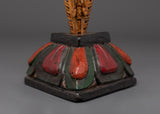
Phurba Dagger with Skull | Spiritual Ritual Tool for Meditation and Healing

100% AUTHENTIC

HANDMADE

FREE SHIPPING
Phurba Dagger with Skull Top | A Powerful Symbol of Transformation and Protection
--------------------------------------------
Size: 28.5cm (Height) x 13.5cm (Width)
Weight: 0.28kg
Materials: Wooden Base, Buffalo Bone, Acrylic Color
--------------------------------------------
About The Ritual Item :
This Phurba Dagger with Skull Top, a holy Tibetan ritual instrument fashioned from wood and hand-painted with acrylic color, transmits protective energy and spiritual authority. This dagger is lightweight yet symbolically potent, measuring 28.5cm in height and 13.5cm in breadth and weighing only 0.28kg. The three-sided blade and finely sculpted skull top represent cutting through the "three poisons" of ignorance, attachment, and aversion, resulting in spiritual enlightenment and energetic balance. Every curve and detail on this dagger is handcrafted, representing traditional Tibetan workmanship and honoring the strong guards of the Dharma.
The Phurba, also known as the Kila, is commonly utilized in Vajrayana Buddhist and Bon rituals to ward off evil energies, demons, and harmful influences. The skull top represents impermanence and the transcendence of the ego, connecting the practitioner with the wisdom of death and rebirth. During ceremonies, the dagger is frequently used as a spiritual weapon, planted in the ground or on an altar to create holy boundaries, ward off bad spirits, or channel wrathful deities like Vajrakilaya. Its small size and superb craftsmanship make it suitable for use in both group rituals and solitary tantric activities.
Introduction To The Phurba :
The ceremonial dagger (Sanskrit: Kila; Tibetan: phurba) is essential for expelling evil and is considered particularly effective in neutralizing the forces obstructing Tantric Buddhist practice. It has ancient origins, first appearing in the Indian Rig Veda as the core blade of the vajra used by Indra to destroy the primordial cosmic snake Vritra. Kila, derived from Sanskrit, was most likely associated with Vedic sacrifices. Meditation on the Vajrakila Tantra, an early Indian scripture first promoted in Tibet in the eighth century by Padmasambhava, one of the founding teachers of Tibetan Buddhism, is used to invoke the three-headed Vajrakila Buddha.
How to Set Up Your Buddhist Shrine?
Find a clean, quiet, and uncluttered spot.
Please set up an altar table and cover it with an altar cloth that calls to you.
Place your sacred item (statue, thangka, or a picture of Buddha) at the center.


